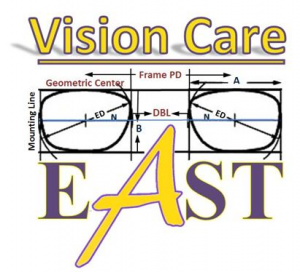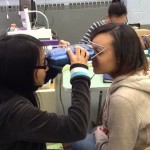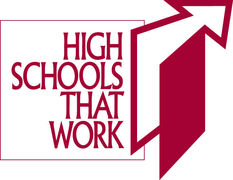This blog series provides readers with insight on the valuable content that is being shared at the National Career Clusters® Institute. Guest bloggers are among teachers, faculty, researchers, and other experts that will present at the national gathering in Fort Worth, TX in June. Today’s guest blogger is Logan Newman, Ophthalmic Fabrication Teacher at East High School in the Rochester City School District, New York. 
Having been teachers in the Rochester City School District in New York for 12 years there are specific things we have noticed about our economically troubled area. Below are some important facts:
Fact: According to New York State data, 45.5% of students who start 9th grade graduate high school after 4 years (2008 data)
Fact: According to NYS education department data only 5% of students are college or career ready
Fact: Students who participate in a Career Technical Experience (CTE)Â program are 3 times more likely to graduate from High School than a student with no CTE classes.
Fact: The Monroe County workforce data states that 39% of the current workforce and 26% of new hires have basic skill deficiencies
Fact: As many as 60 percent of the children described as “problem learners†have vision problems (American Optometric Association)
Fact: Students from economically disadvantaged families (we have the highest poverty rate of all school districts in NYS) who need glasses have opportunities to get free ones, but it requires they miss time from school, resulting in greater loss of education.
Fact: A teacher at our building (me) had experience and an associate’s degree in opticianary, but no materials to make glasses and no class was offered or developed to teach it
Taking these facts together gave us some insights into what we could do to make a difference within our school and community. Our community needs skilled workers to work in the ophthalmic fabrication industry and our students need both skills for available jobs and glasses to be able to see and improve their education classes. Unfortunately, funds to purchase the tools for these programs aren’t in most education budgets. Fortunately, a grant was offered to us that did allow us to develop our plan.
Using the money from the grant we purchased materials for an ophthalmic fabrication lab (photo of lab at right). We taught a small group of students the skills of opticians and developed a full year class curriculum.
During this full year course students have learned about the shape of the eye, why people need glasses, how to correct vision with glasses, and how to make glasses. They have learned about face shape and frame selection, as well as lens selection and needs for patients.
Students in the program are working with students within the building who need eyeglass repair and fitting. Within the next several months they will begin manufacturing glasses for students who need vision correction help.
Erie Community College in Williamsville, NY has one of two Ophthalmic Dispensing degree programs in New York State. Seven of the 20 graduating seniors who have taken the high school course applied, and were accepted, into the ECC program. Because of the partnership we have formed with ECC they will be forgiven a second semester fabrication class, helping the students save time and money.
 Students have also had the opportunity to talk with employees of Rochester Optical, as well as touring their production facility and dispensing shop. Students stated the time was useful because they got to see the skills they were using in class in use as a job. (Photo of group tour at right)
Students have also had the opportunity to talk with employees of Rochester Optical, as well as touring their production facility and dispensing shop. Students stated the time was useful because they got to see the skills they were using in class in use as a job. (Photo of group tour at right)
Our next step is to enroll juniors into a second year of the program and have them work with optometrists and student-patients. This second year will focus on making glasses for students who need them, learning how to deal with patients, and preparing for job opportunities. (In photo below, students are practicing taking pupillary measurements)
I’m hoping that, as you read this, you thought to yourself: “Wow! This is a great idea and I can see something like this in my area!†Your assignment between the time you read this and the time we meet is to look for local industry in your area and see what you might be able to link to your school to help your students.
Logan Neman’s breakout session, A Vision for the 21st: Industry and High School Collaboration in Optics, will be held Wednesday, June 12 from 10 a.m. – 11 a.m. Newman’s co-presenter is Paul Conrow, Teacher of Precision Optical Fabrication.Â
East High School is an urban high school in Rochester, NY that is collaborating with local optics companies to help meet the high demand for optical technicians in the local economy. With state grant money, the school has created two lab spaces where students may learn ophthalmics (making prescription glasses) or precision optical fabrication (machining precision lenses for telescopes, cameras, etc.) using the machines and instruments found in industry. High school courses designed with input from local experts can simultaneously help students and the local economy succeed.
More about the National Career Clusters® Institute
Ramona Schescke, Member Services Manager





 If you have any questions, comments or suggestions, feel free to contact me. We look forward to meeting you on June 12th!
If you have any questions, comments or suggestions, feel free to contact me. We look forward to meeting you on June 12th!






 Students have also had the opportunity to talk with employees of Rochester Optical, as well as touring their production facility and dispensing shop. Students stated the time was useful because they got to see the skills they were using in class in use as a job. (Photo of group tour at right)
Students have also had the opportunity to talk with employees of Rochester Optical, as well as touring their production facility and dispensing shop. Students stated the time was useful because they got to see the skills they were using in class in use as a job. (Photo of group tour at right)
